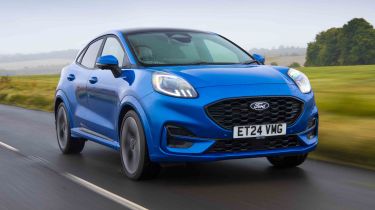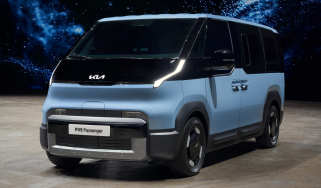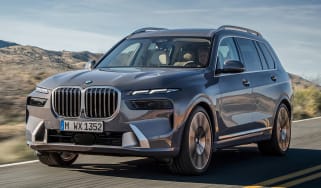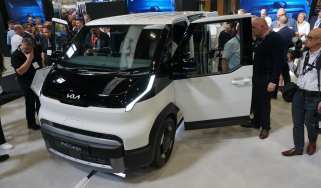Ford Puma - MPG, CO2 and running costs
We’ve found real-world fuel economy of the Ford Puma to be slightly under par when compared with the official figures

With a fuel economy figure of 52.3mpg, the Puma mHEV with the 123bhp engine and a manual transmission looks promisingly frugal on paper. When we ran the 153bhp mHEV on our test fleet, we averaged 44.3mpg, which was a decent, if not outstanding, return for a car of this size.
Those figures are helped by the mild-hybrid powertrain, which recovers energy that would otherwise be lost when slowing down or braking via an integrated starter/generator unit, and stores it in a 0.48kWh battery. This can then be used to reduce load (and therefore fuel usage) on the petrol engine for any subsequent acceleration. The set-up also allows the stop-start system to operate quickly and almost seamlessly.
Drivers can view a display on the digital instrument panel to see exactly when the system is in action. Alongside this, cylinder deactivation means the engine can run on two cylinders where driving conditions allow it to save more fuel.
Despite the extra power, the performance ST model still achieves decent economy, with a WLTP-tested figure of 47.1mpg, although CO2 levels are a little higher at 136g/km.
|
Model |
MPG |
CO2 |
Insurance group |
|
Puma 1.0 EcoBoost mHEV 125 Titanium |
52.3mpg |
122g/km |
12E |
|
Puma 1.0 EcoBoost mHEV 155 Titanium auto |
49.6mpg |
128g/km |
17E |
|
Puma 1.0 EcoBoost mHEV 125 ST auto |
47.1mpg |
136g/km |
21E |
Tax
Regardless of the Puma that you choose, Vehicle Excise Duty rates come to £180 a year from the second year onwards. There’s a £10 annual saving courtesy of the car’s mild-hybrid system, allowing it to be classed as an alternative fuel vehicle.
Insurance groups
Insurance premiums for the Puma range should be competitive with those of rivals. The base 123bhp Titanium model comes in at group 12, moving up to group 17 for the more powerful 153bhp version of the same engine. Understandably, the hotter ST model costs the most to insure in the Puma range, with the 168bhp 1.0-litre coming in at group 21.
The Renault Captur has a less powerful 99bhp 1.0-litre model, which starts at group 8, moving to group 16 for the more powerful 1.6-litre E-Tech hybrid.
Depreciation
Over the course of three years and 36,000 miles, the Puma holds its value well when compared with its competitors. The Ford is predicted to retain between 52.0 per cent and 54.3 per cent of its original value, compared with 46.6 to 51.4 per cent for the Nissan Juke, 48.3 to 51.7 per cent for the Skoda Kamiq and roughly 42 per cent for the entire Hyundai Bayon range.
To get an accurate valuation for a specific model, check out our valuation tool...









